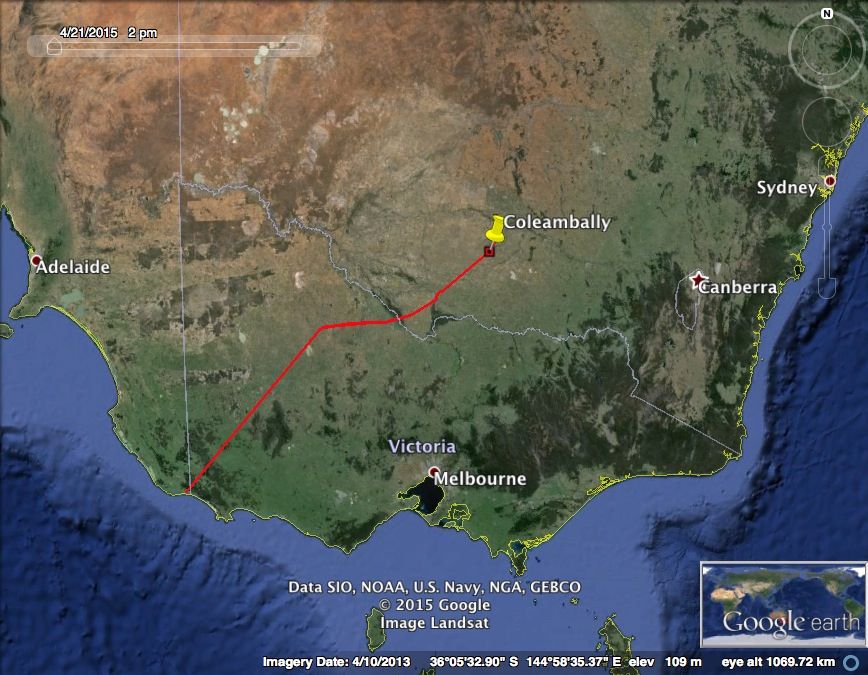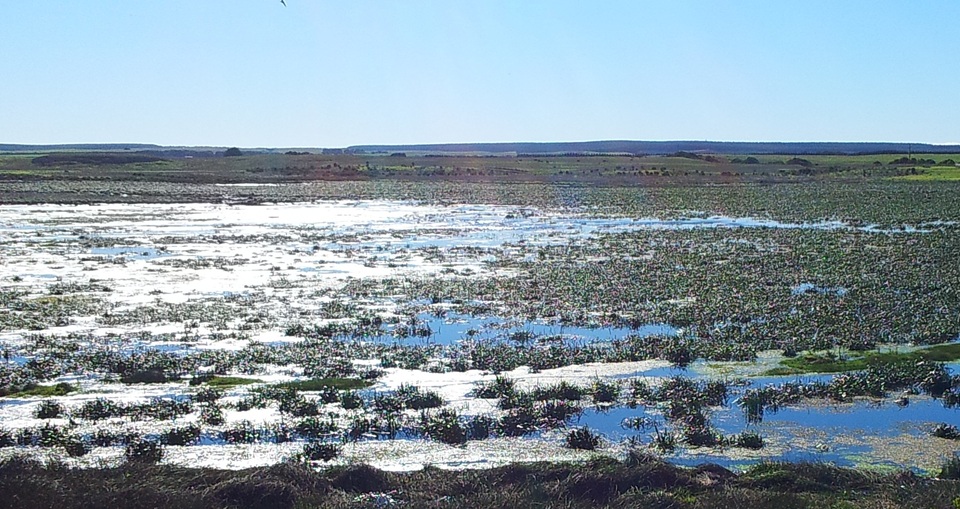Robbie the Bittern puts Pick Swamp (and wetland restoration) on the map!
So what do rice growers in the NSW Riverina district and coastal wetlands in the South East have in common? Until recently, we might have simply answered “not much” – but nature is full of surprises – with early results from a fascinating new project shedding light on a new ecological connection between these distant parts of south-eastern mainland Australia.
Since 2012, Matt Herring from Murray Wildlife has been working with a range of partners on the ‘Bitterns in Rice’ Project, which has been uncovering the secrets of Australia’s ‘Bunyip Bird’ – the globally endangered Australasian Bittern (Botaurus poiciloptilus). The Bitterns in Rice Project is a collaboration between the Rice Growers’ Association of Australia and Birdlife Australia, with support from the Riverina Local Land Services, Norman Wettenhall Foundation, Coleambally Irrigation, Murrumbidgee Field Naturalists Club, the Rural Industries Research and Development Corporation, the Murray Local Land Services, Murray Irrigation, Murrumbidgee Irrigation, Murrumbidgee and Coleambally Landcare, and the New South Wales Office of Environment & Heritage. Basically lots of community and government organisations are pitching in to help better understand and manage this important species.
As a result of this research, we now know there is a breeding population using NSW Riverina rice crops that can reach well into the hundreds, which is remarkable considering that there are probably only about 2500 individuals remaining in three countries: Australia, New Zealand and New Caledonia. However, where the NSW Riverina population goes after harvest has been a mystery. So the Bitterns in Rice Project recently raised $65,000 in a crowdfunding campaign to begin the process of satellite tracking bitterns, in an attempt to unravel the mystery.
And this is where the tale takes an interesting turn! At the time of writing, only one young Bittern (known as Robbie) has been fitted with a tracking device this year in late April before dispersal, and within 11 days he had taken a 550km journey across 2 state borders and headed directly to Pick Swamp, now part of Piccaninnie Ponds Conservation Park (a Ramsar site since December 2012).

(image courtesy Bitterns in Rice Project, Matt Herring, Murray Wildlife)
Obviously this journey is a remarkable story in itself – discovering for the first time the scale over which these birds are utilising the landscape. But there is a sub-text as well, and that is the story of the value of wetland restoration.
For those of you that don’t know, Pick Swamp was drained and developed from the 1970s and only a decade ago was still a working cattle grazing property. But after being purchased by the South Australian Government in 2005 for its restoration potential, and then progressively restored from 2007, the area has been transformed back into a diverse and functioning wetland ecosystem. Having inadvertently flushed a few bitterns out of dense wetland vegetation on site over the years myself, isn’t it amazing to think that, like Robbie, these birds may have been born and bred in the rice crops of the Riverina? These early results show just how much we have to learn about the concept of landscape connectivity for wetlands, and provide great endorsement for the value of wetland restoration.
So what can you do?
Well, if you are interested in returning water to your drained swamp in the South East of SA or western Victoria, Nature Glenelg Trust’s Wetland Restoration Program on Private Land may be able to help. For more information, please contact Mark Bachmann (0421 97 8181) or Lachlan Farrington (0401 208 717).
You can also keep up with the latest on Robbie’s journey by checking the latest news on the Bitterns in Rice website.



